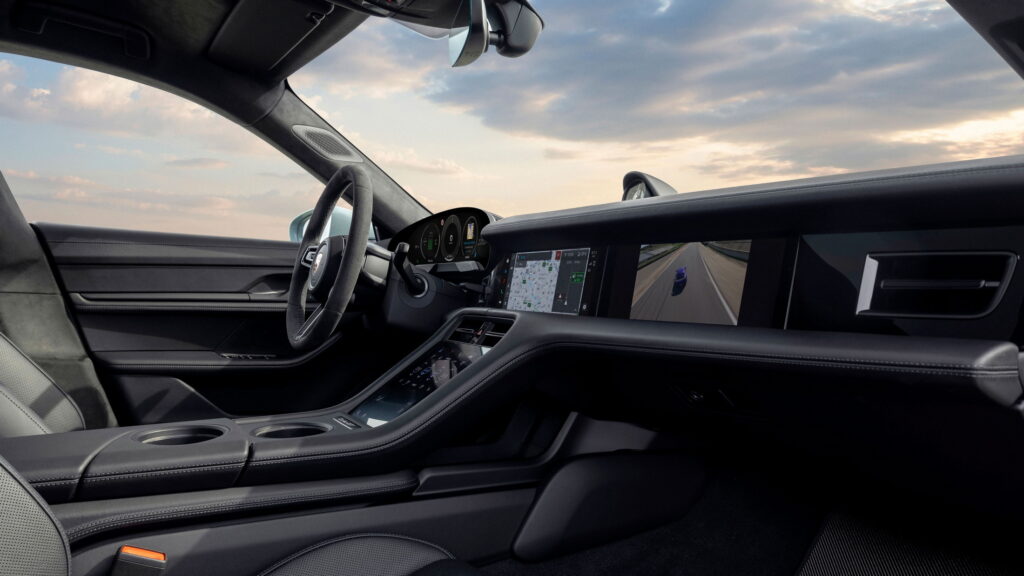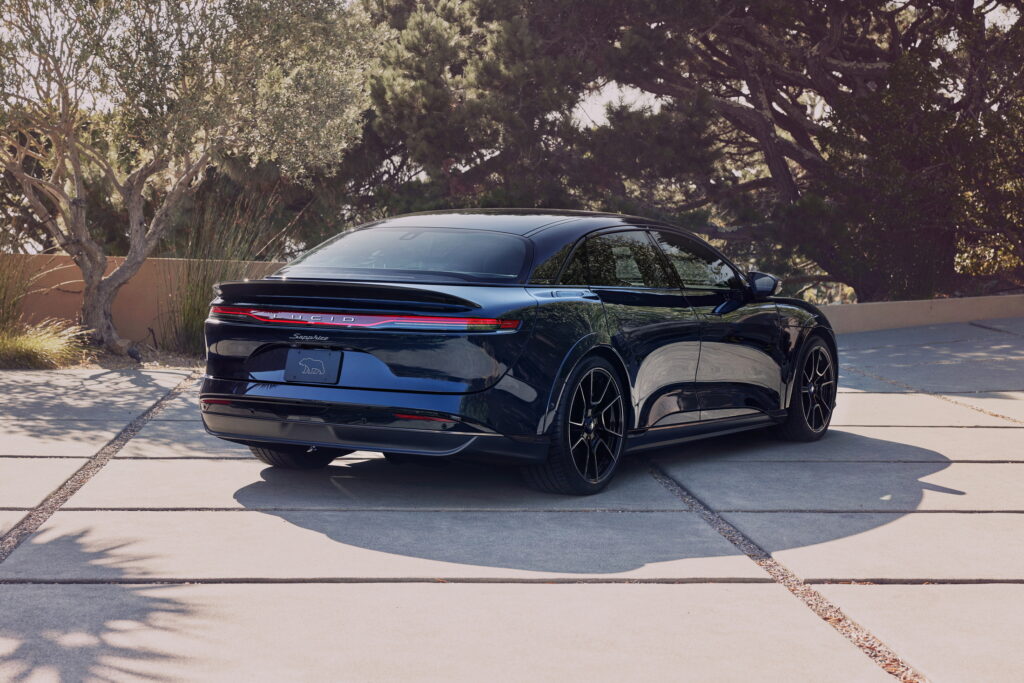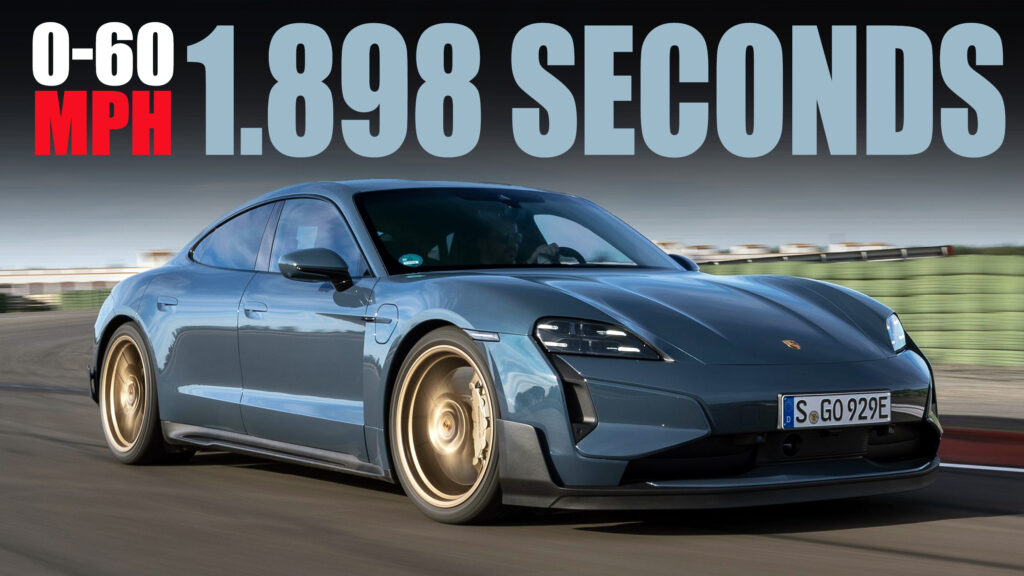- Car and Driver just confirmed that the Taycan Turbo GT can achieve 0-60 mph in under 2 seconds.
- The testing regimen included runs in both directions on an unprepared surface.
- Competing cars like the Tesla Model S Plaid and Lucid Air Sapphire do better at higher speeds.
Porsche just beat Tesla at its own game. Years ago, the American EV manufacturer claimed a 0-60 mph time under two seconds, but that came with several asterisks. Now, the new Porsche Taycan holds the crown as the fastest production car from 0-60 mph (0-96 km/h) ever tested by Car and Driver. Here’s a look at the testing protocol, the cars it surpassed, and how it could potentially achieve even quicker times.
The new Porsche Taycan Turbo GT was never going to be considered slow. With launch control engaged, its output surges from 777 hp to 1,019 hp (760 kW / 1,033 PS), briefly peaking at 1,092 hp (815 kW / 1,108 PS) for two seconds. It boasts a manufacturer-claimed top speed of 180 mph (289 km/h) and a 0-60 mph time of 2.2 seconds, or 2.1 seconds with the optional Weissach package.
That said, cars like the Lucid Air Sapphire and Tesla Model S Plaid both play in the same sandbox. Neither of them, though, could do what this Porsche just did.
More: What’s The Greatest Porsche Ever Made?
According to Car & Driver, the Taycan Turbo GT blasted from 0-60 in just 1.910 seconds. Then, they turned the car around and did it again, this time in 1.898 seconds. Keep in mind, these figures include one foot of rollout—a standard in performance testing that the magazines estimates shaves approximately 0.1 seconds off the time for most cars.

This means that even without the rollout factored in, the Taycan Turbo GT can still hit 0-60 in under two seconds. Forget the Ferrari SF90, Tesla Model S Plaid, Lucid Air Sapphire, or any other production car—this is the fastest 0-60 time on record.
On top of that, there are some other factors to consider. First, this was on a standard concrete surface. Many of the cars flirting with this sort of title require the car to be on a sticky drag strip to achieve the numbers claimed. In addition, the Taycan tested isn’t the lightest in the lineup. Porsche offers the same car with what it calls the Weissach package that removes a claimed 165 pounds (about 75 kg). Imagine what this car might do with one full human’s weight pulled out of it while also on a drag strip.
Tesla and Lucid are quicker at higher speeds
That said, it’s not all wins for Porsche. C/D notes that as speeds climb, both the Tesla Model S Plaid and Lucid Air Sapphire begin to catch up. While the Taycan completes the quarter mile in a blistering 9.3 seconds at 150 mph (241 km/h), matching the 1,234-hp Lucid Air and beating the 1,020-hp Model S Plaid by just a tenth of a second, the story changes beyond that point.
Both competitors have higher exit speeds by the end of the quarter mile, and by the time the cars hit 160 mph (257 km/h), the Plaid is 0.2 seconds quicker, while the Sapphire leads by 0.7 seconds. At 170 mph (274 km/h), the Sapphire is a full 1.1 seconds ahead of the Porsche.





